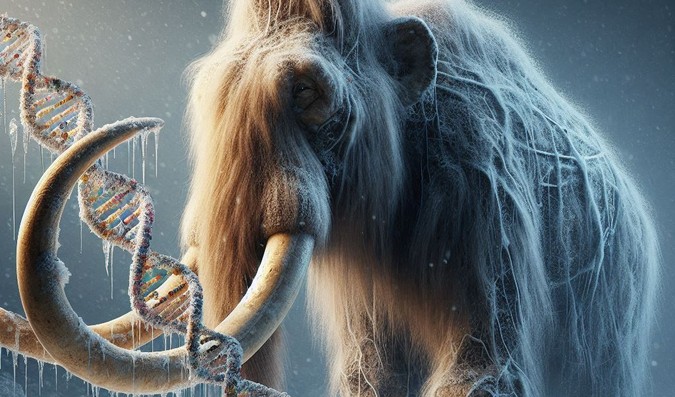
Hi there! Welcome to This Week in Science, where we learn about fascinating discoveries in the natural sciences every week.
To what extent are cancers preventable? A study by the American Cancer Society reveals that 40% of new cancer cases and nearly half of cancer deaths in U.S. adults over 30 are linked to preventable risk factors. Leading the list is smoking, responsible for almost 20% of cases and a third of deaths. Other significant factors include excess body weight, alcohol, physical inactivity, poor diet, and infections like HPV. The research analyzed 18 modifiable risks across 30 cancer types, finding lifestyle factors connected to over 700,000 cases and 262,000 deaths in 2019.
The study suggests over half of new cases in 19 cancer types are due to modifiable factors, with some cancers like melanoma and cervical cancer being highly preventable. Lung cancer has the most cases linked to these factors, mainly smoking. Excess body weight is the second-largest contributor, significantly affecting several cancers.
Addressing core behaviors like smoking cessation, healthy eating, and exercise can significantly impact chronic diseases, including cancer. Policymakers should create environments that facilitate healthy choices, especially in disadvantaged areas. Experts stress the importance of adopting healthy habits early but note that positive changes at any age can reduce cancer risk and improve outcomes.
Source: Cancer Journal for Clinicians
Freeze-drying made a wooly mammoth DNA turn into glass. Researchers have discovered that drying turns DNA into a highly stable glass-like state, preserving the three-dimensional structure of chromosomes for thousands of years. This finding, detailed in a study published on July 11 in Cell, allowed scientists to examine the genome of a 52,000-year-old woolly mammoth, revealing active and inactive genes before its death. Scientists hypothesize that, shortly after this mammoth’s death, its body spontaneously freeze-dried in the Siberian cold, leading to a glass transition that preserved the strictures on a nanometer scale.
Using a technique called PaleoHi-C, researchers were able to analyze ancient DNA, which was previously thought to be too degraded for such studies. Initial experiments with various dried samples, including turkey bones and roadkill mice, demonstrated the resilience of DNA structure.
The team, involving over 50 scientists, ultimately applied this technique to the well-preserved DNA of a mammoth frozen in permafrost. This process, called chromoglass, prevented DNA pieces from drifting apart, allowing the identification of 28 chromosome pairs in mammoths, similar to elephants. The study also found specific genes active in mammoths but not in elephants, like the Egfr gene, which influences hair growth.
Further research on a second mammoth confirmed the preservation of DNA's 3-D structure through rapid drying by freezing. This groundbreaking technique, PaleoHi-C, opens new possibilities for studying ancient DNA and understanding the biology of extinct organisms.
Source: Cell
Loneliness is health-damaging. A study from the University of Waterloo found that loneliness negatively impacts memory in older adults more than social isolation, although both pose significant risks. The researchers examined how combinations of social isolation and loneliness affected memory over six years in middle-aged and older adults. They categorized participants into four groups: socially isolated and lonely, only socially isolated, only lonely, and neither.
Results showed that those both socially isolated and lonely experienced the greatest memory decline, followed by those who were only lonely. This was unexpected, as loneliness alone had a more significant impact on memory than previously recognized, despite many studies emphasizing the dangers of social isolation. Conversely, socially isolated individuals who were not lonely often engaged in mentally stimulating solo activities, which helped maintain memory.
Lead author Ji Won Kang emphasizes the need for community programs to support older adults who are both socially isolated and lonely, as they are at the highest risk of memory impairment. Programs like transportation or home visits could mitigate the effects of isolation. For those who are only lonely, identifying the root causes of their loneliness, such as relationship issues, and providing appropriate support like counseling is crucial.
This interdisciplinary study highlights the complex interplay between social factors and cognitive health in aging populations.
Source: Archives of Gerontology and Geriatrics
Cover image: A wooly mammoth's DNA can tell us a lot about evolution. Image created with Dall-E (copilot.microsoft.com)
Stats
- Recommendations +2 100% positive of 2 vote(s)
- Views 2169
- Comments 5
Recommended
-

Alen Piljić
Managing director | Life Science Network gGmbH
Also:
- President | Research Elements Association
-

Gabriele Sarti
Doctoral Researcher | Center for Language and Cognition (CLCG), University of Groningen
Post a comment
Comments
-
Thursday, 19 December 2024 - 10:14 UTC
This comment has been removed due to violation of our Terms.
-
Wednesday, 18 December 2024 - 12:55 UTC
This comment has been removed due to violation of our Terms.
-
Wednesday, 18 December 2024 - 12:55 UTC
This comment has been deleted by the author.
-
Wednesday, 18 December 2024 - 12:53 UTC
This comment has been deleted by the author.
-
Monday, 07 October 2024 - 12:45 UTC
This comment has been removed due to violation of our Terms.